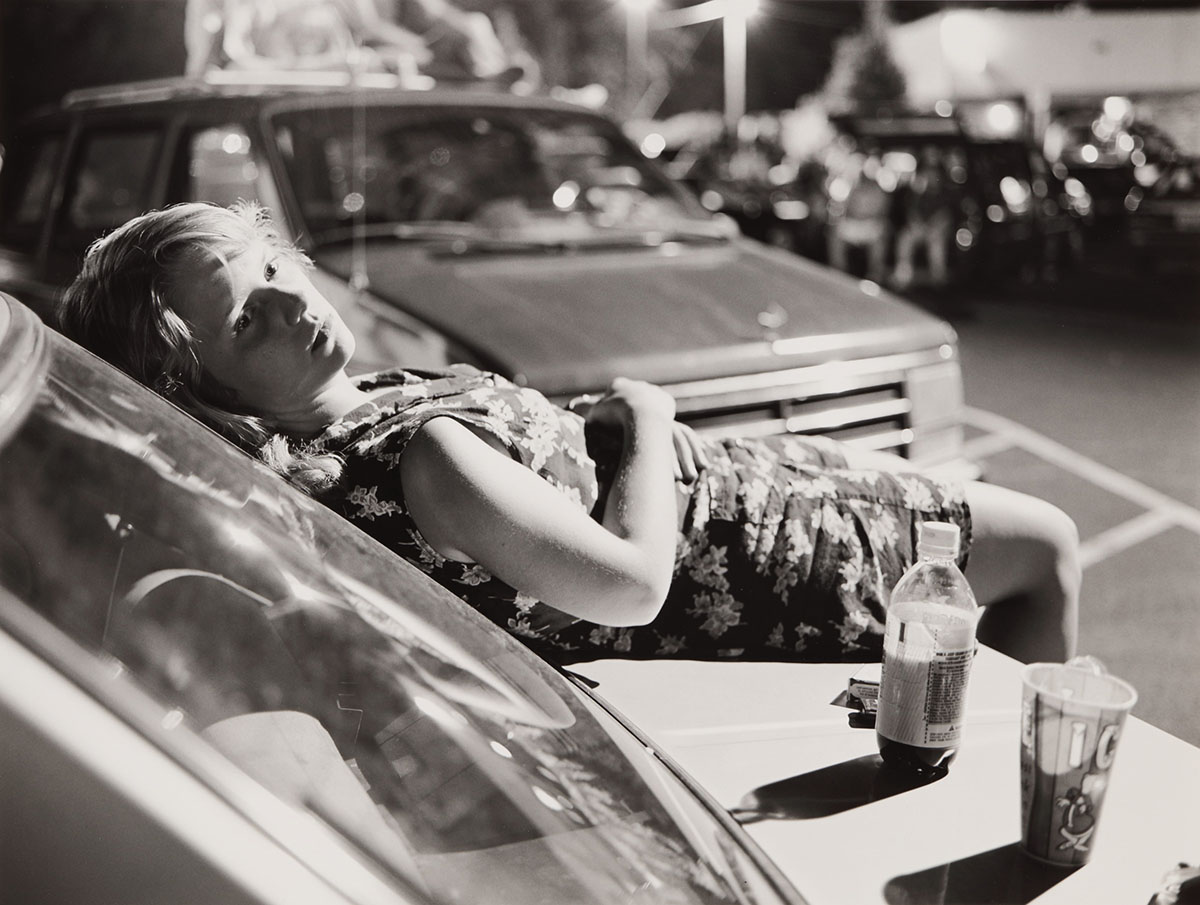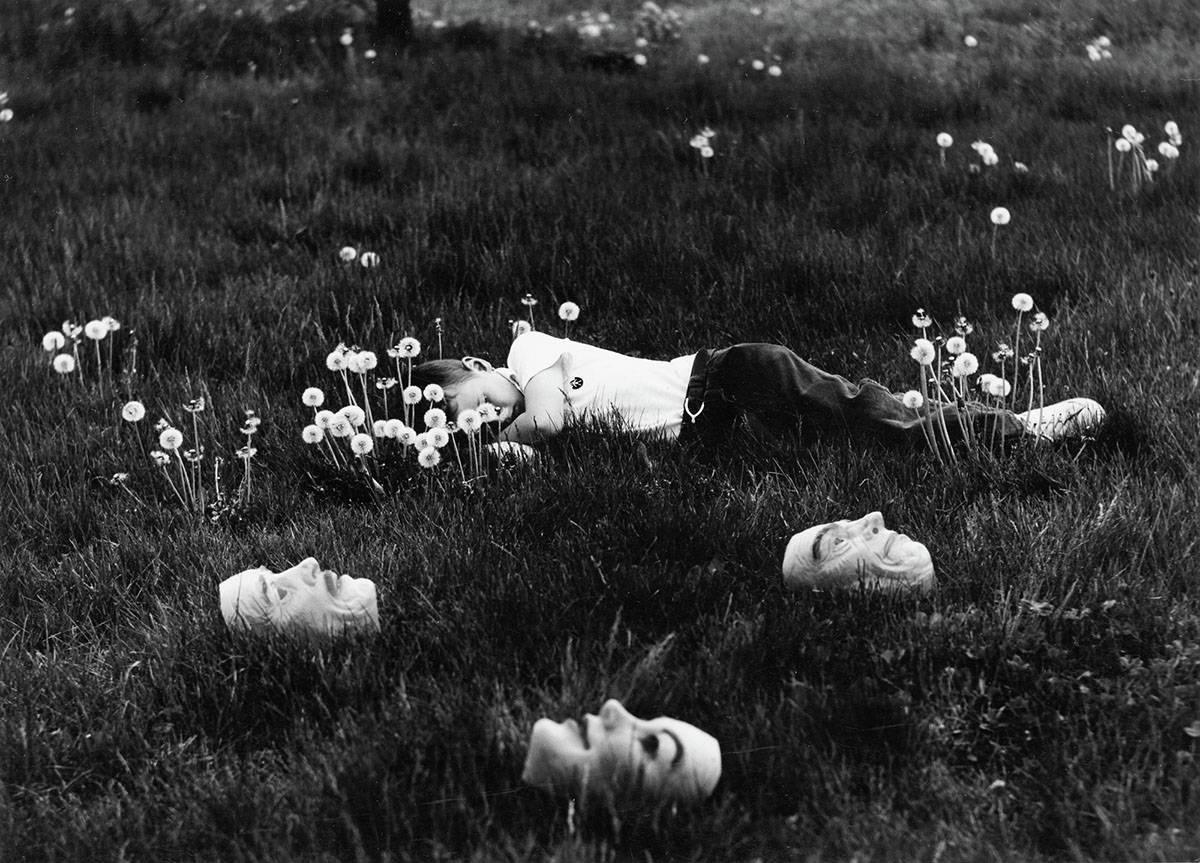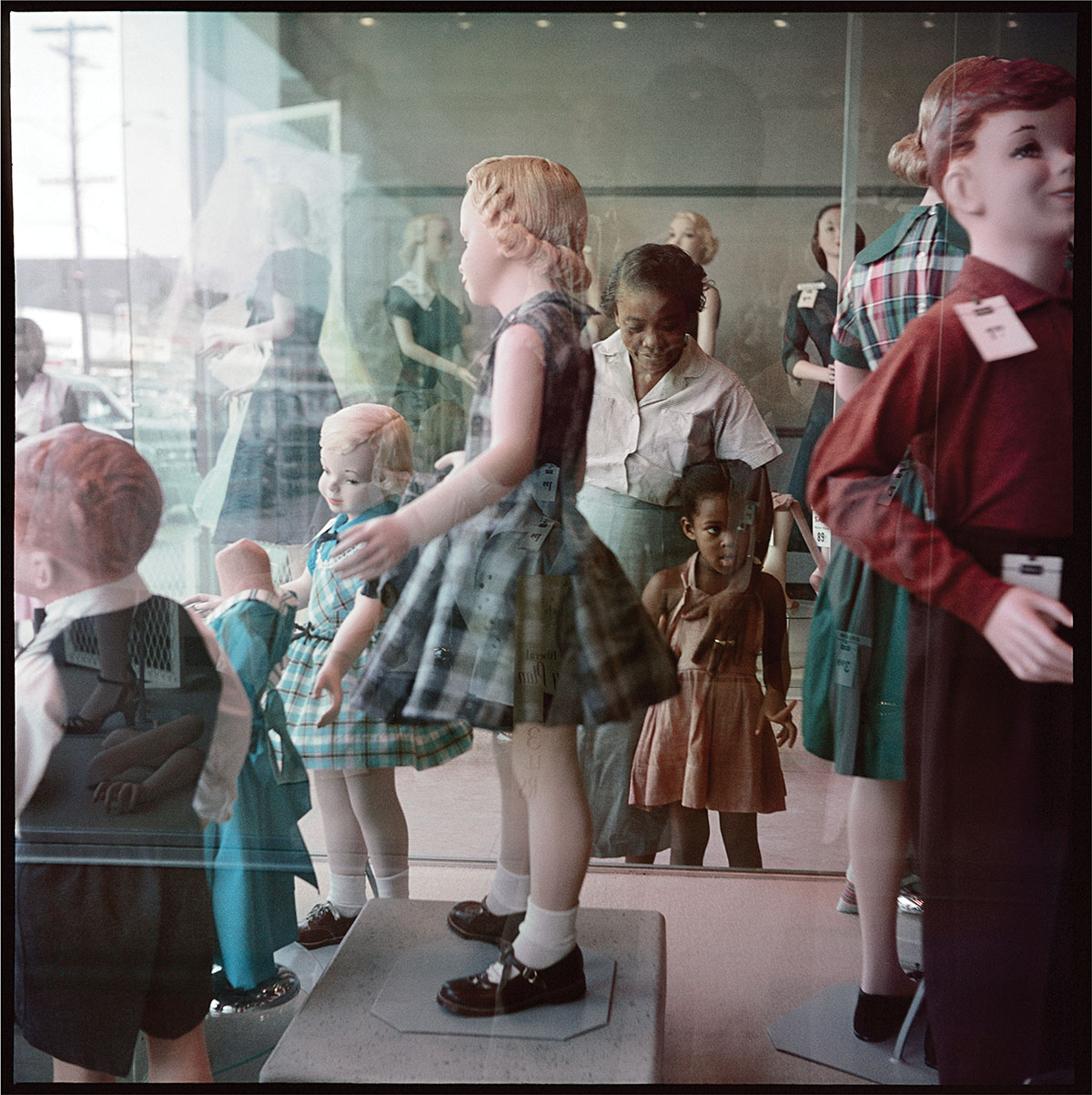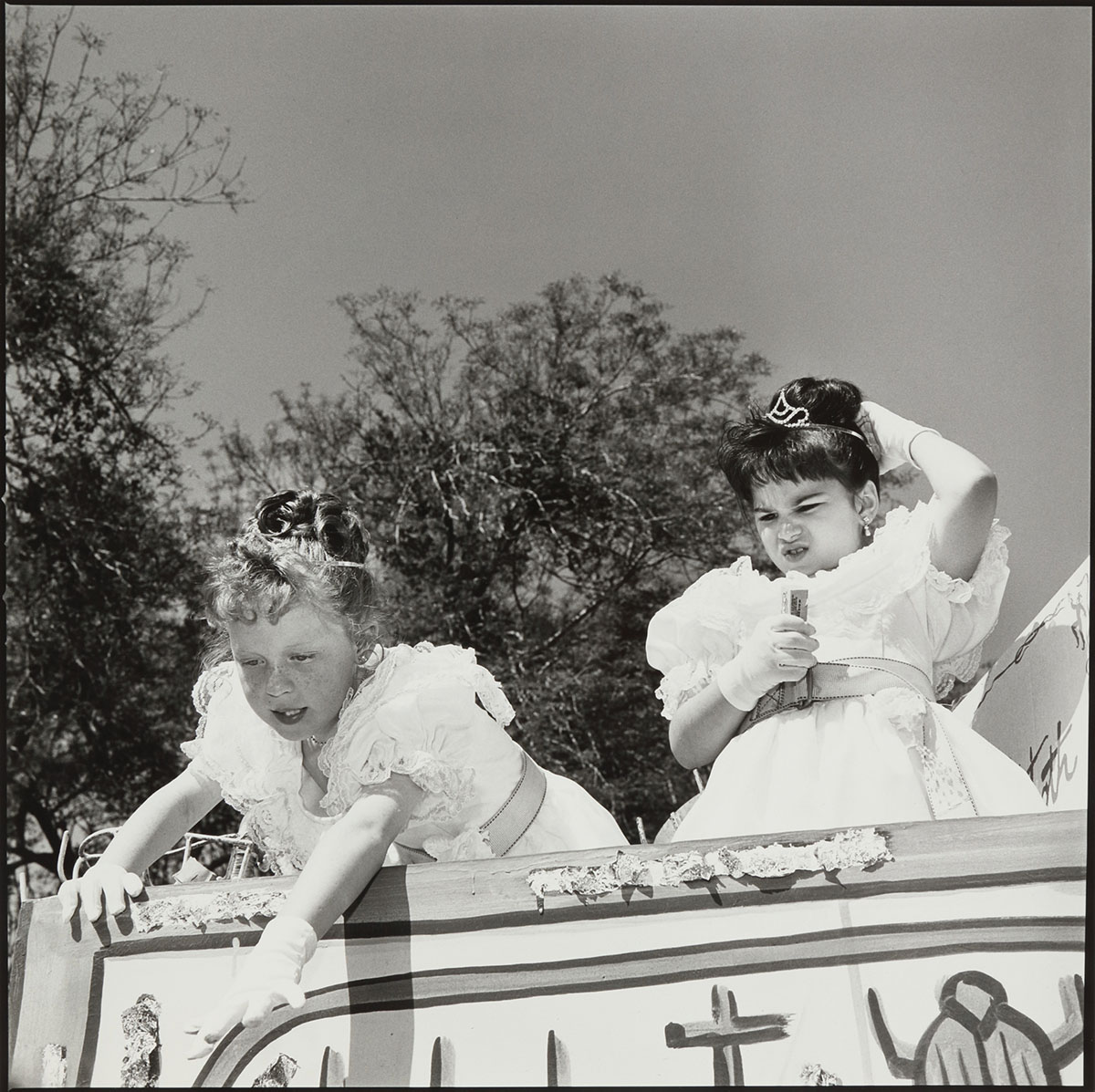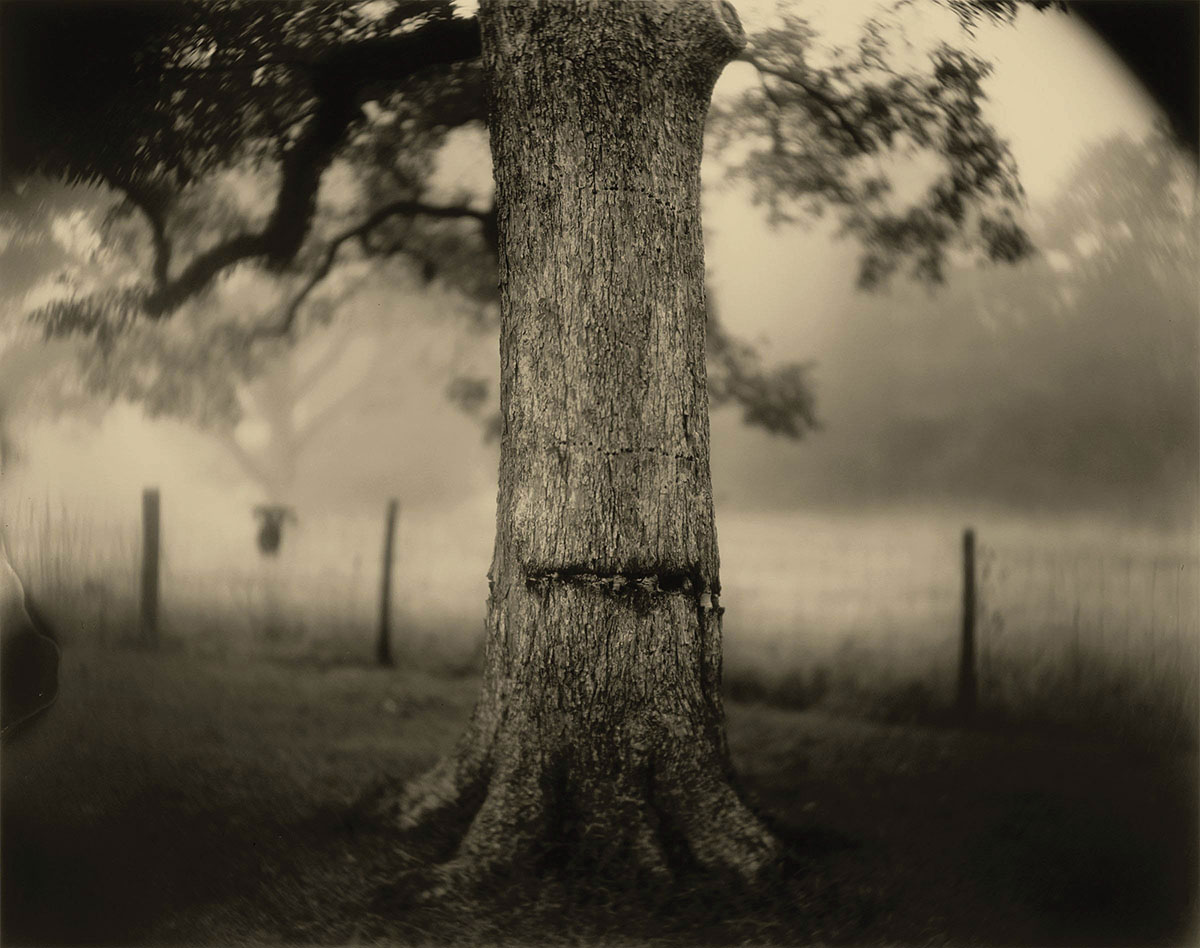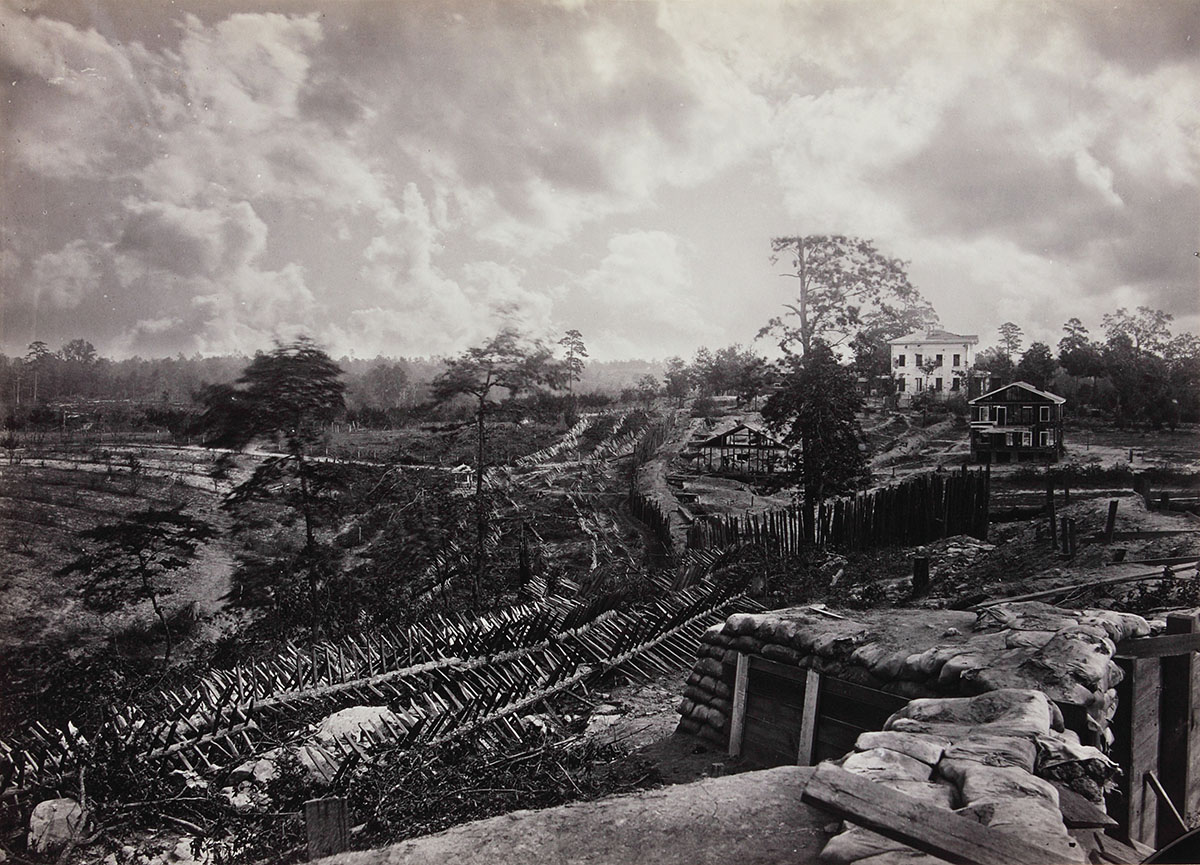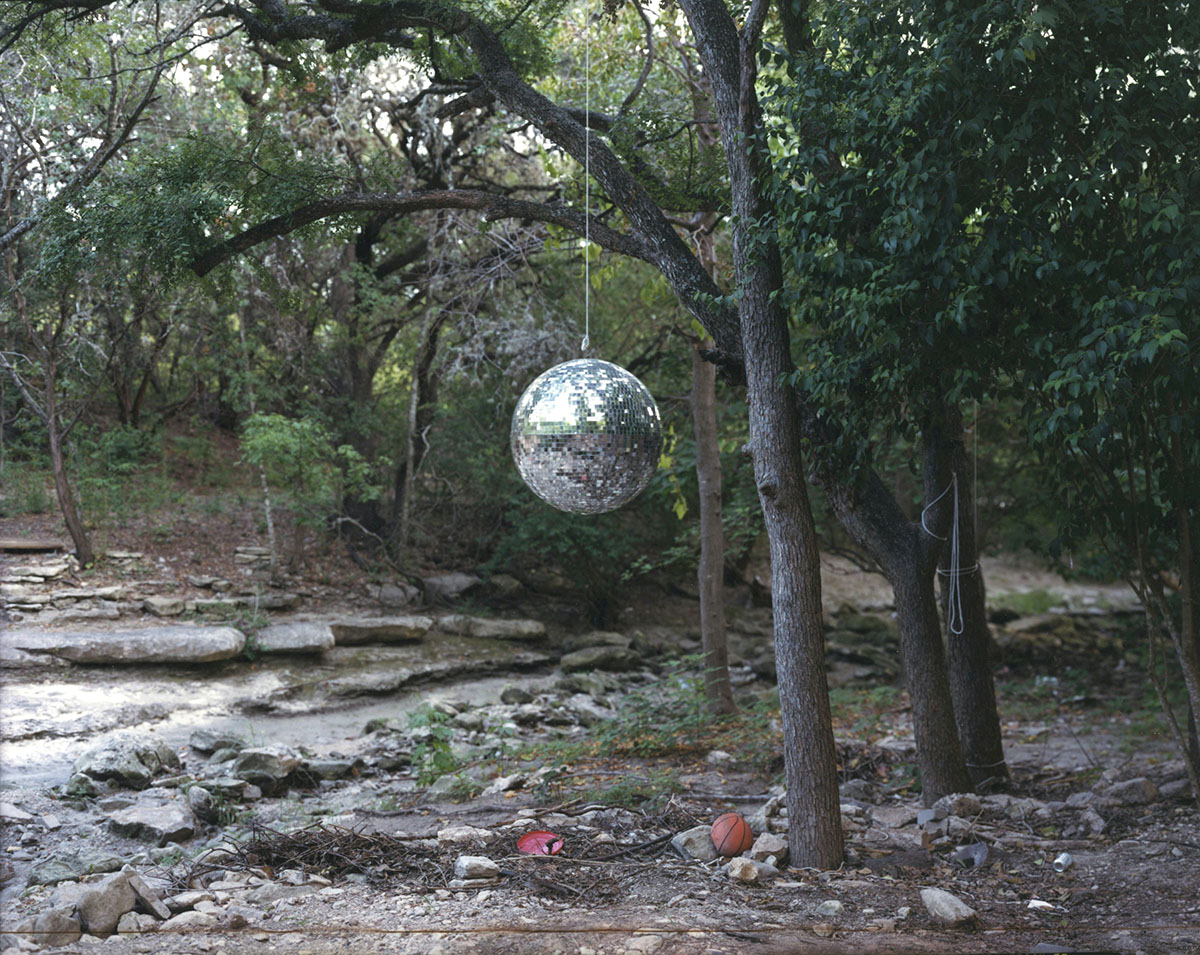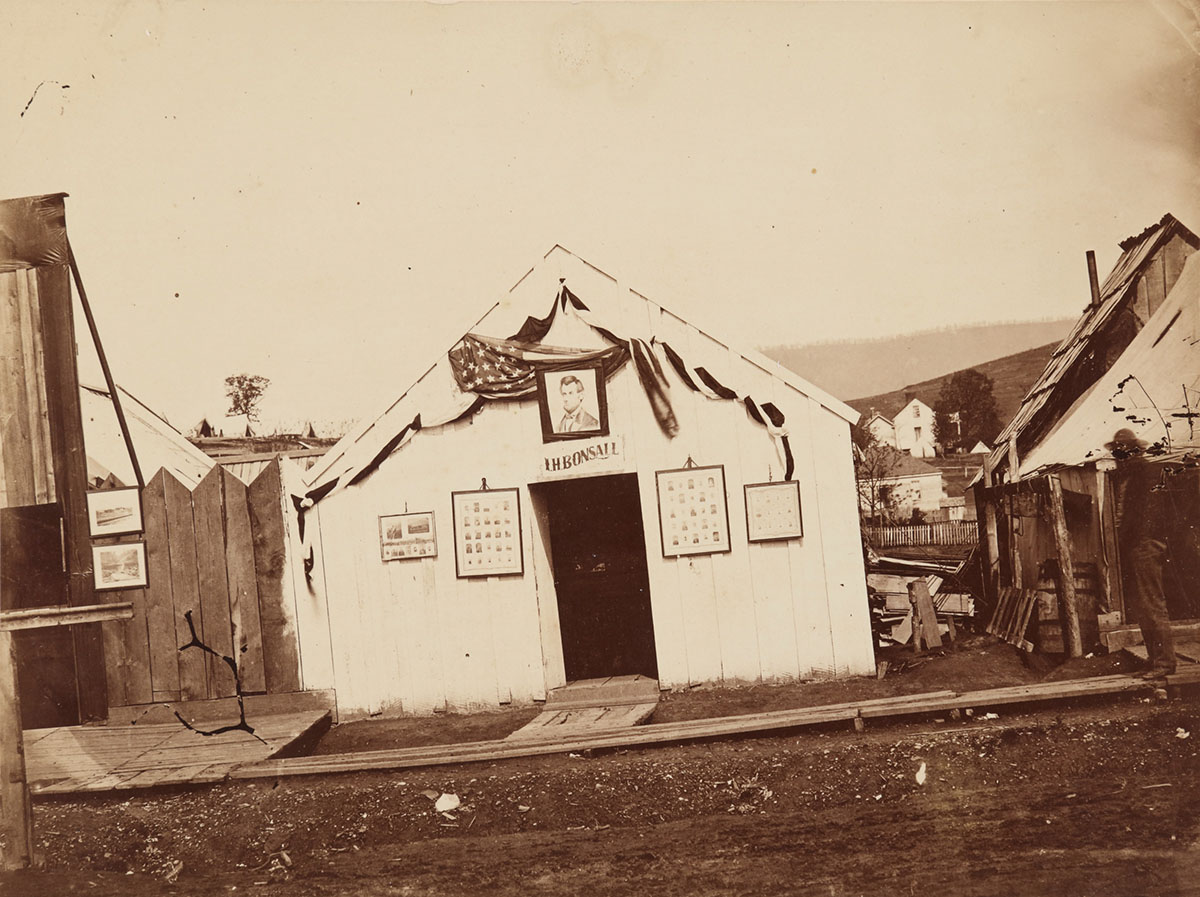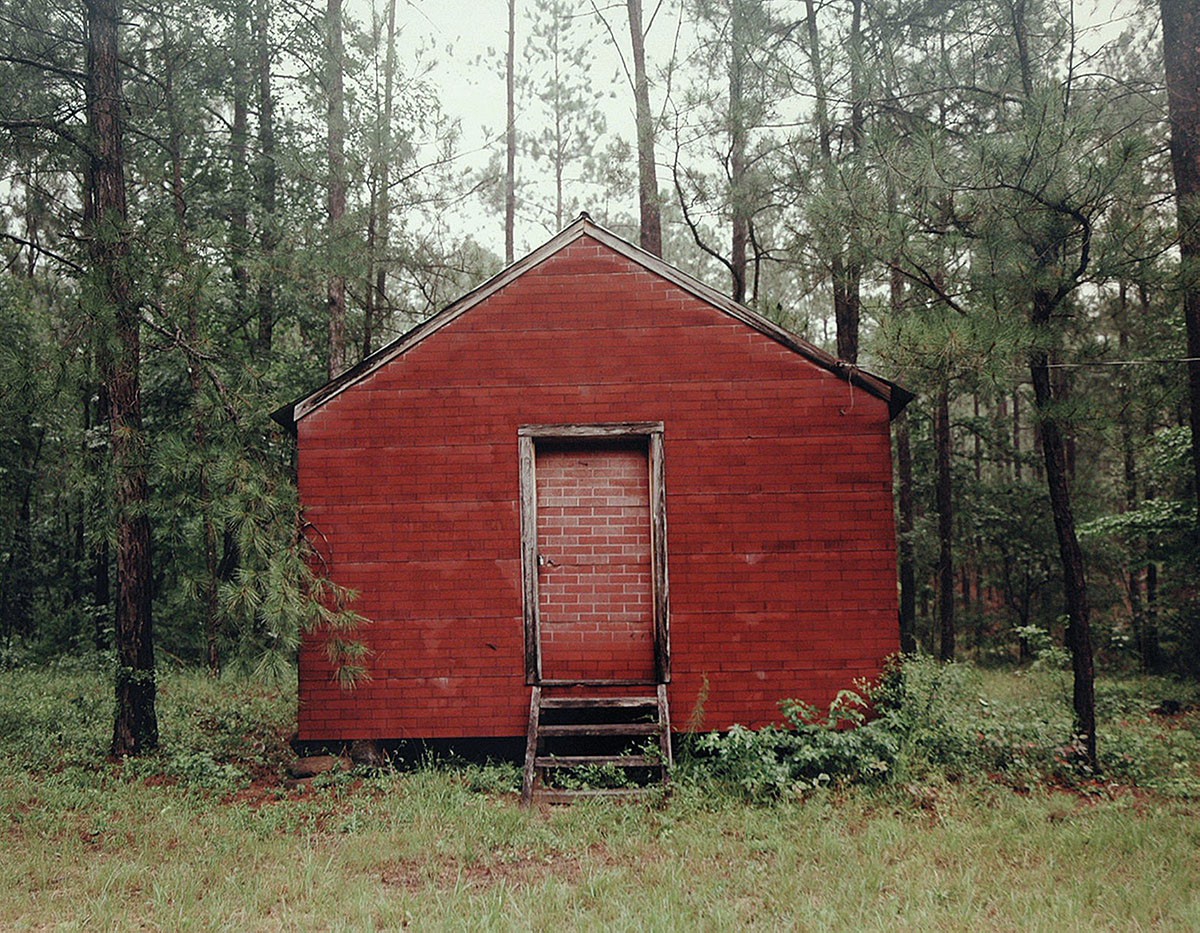It All Begins in Love
An essayist sees glimpses of her parents and the many struggles they endured in a new exhibition of southern photography
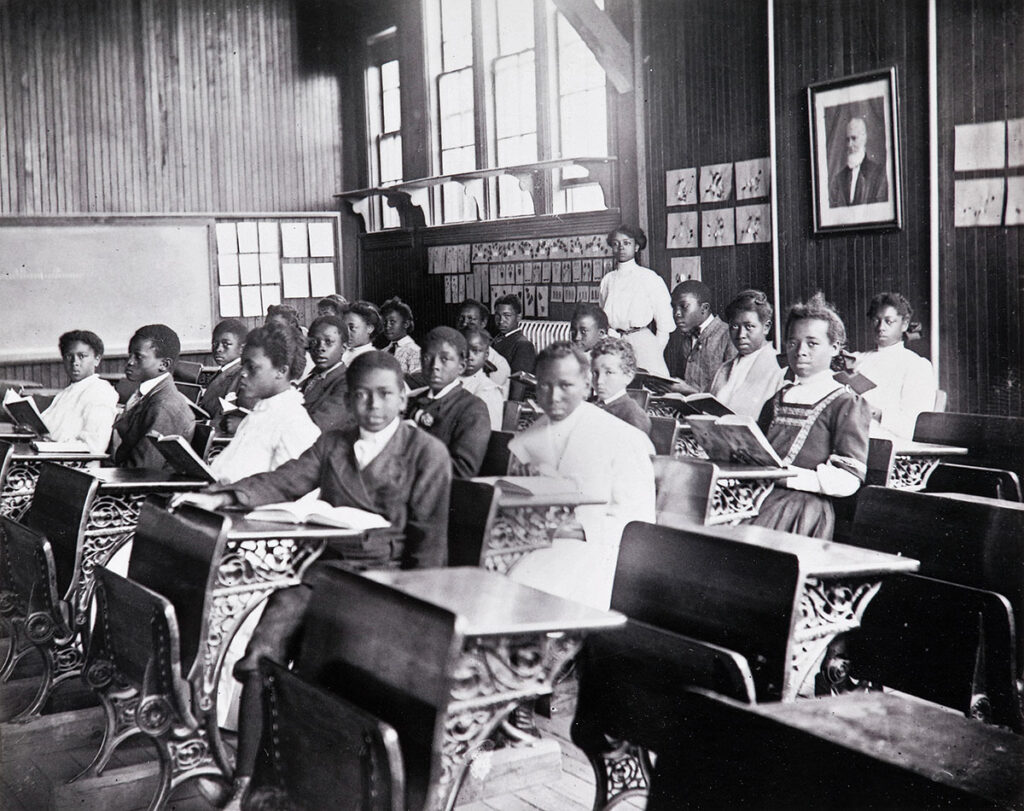
Among the photographs that make up “A Long Arc,” an exhibition documenting the American South from the 1840s to the present, is James Van Der Zee’s powerful depiction of a classroom in Phoebus, Virginia. The photo, dating to 1907, represents the Du Boisian dream that I, like so many generations of Black Americans, have built my life around. When I first arrived to teach English at the University of Vermont, in 2001, I kept an image taped to my computer, a picture of an old Black woman sitting in a chair reading while a young Black woman stands behind her, pointing to the book, presumably helping the older woman make her way through the pages. I kept it there to remind myself that my purpose was something larger than my own needs and desires. It was helpful in those lonely, early days, when I was as uncertain of the life I had chosen as I was of the state in which I had chosen to live it. Below the image, for a caption, I typed out and pasted a line from the prologue of Invisible Man: “Old woman, what is this freedom you love so well?”
In those days, like all days, I held fast to the joke I often tell about myself, that I am a child of immigrants on both sides: Trinidad on my father’s side and the Deep South on my mother’s. Education was the vehicle for my parents’ freedom and self-advancement. Fittingly, they met at Fisk University in Nashville, where they began to build a life that continues to keep me on course, even as far away as Vermont.
My parents lived many lives, together and apart. For both of them, a crucial life began in classrooms. My mother always excelled in school. In the Jim Crow South of Mississippi, it was a space for a Black girl to dream, and for imaginative children living under repressive regimes, dreaming is as essential as the elements. Inside those storied wooden classrooms, my mother learned how to live, even when other parts of life baffled her. In a society where children were meant to be seen and not heard, my mother made sure she was always in the teacher’s line of sight, her hand sticking straight up. She was that kid. In a world where girls and women paid dearly for talking back, my mother was wise in the classroom. In a culture where women were praised for deferring, my mother wasn’t satisfied unless she was at the top of her class. She was a sickly child, and the adults who loved her considered her an angel, too good for this world, the way Little Eva in Uncle Tom’s Cabin is too good for this world, a tan Shirley Temple whose straight hair was lovingly coaxed into ringlets for family photos. Among her peers at school, however, my mother was crafty, determined, and calculating, and she had a very smart mouth. Teacher’s pet. She was the mother of my dreams. I look for her in every classroom I enter.
My mother’s light skin and long, straight hair brought her trouble her whole life. People judged her by her hair, so much so that for most of the time I knew her, she kept it hidden, folded into a bun she wore at the back of her head. Like Janie in Their Eyes Were Watching God, she did not compose and did not claim the stories her skin and hair told about her. I see her now in the small, light-skinned boy in James Van Der Zee’s photo taken at the Whittier Preparatory School, a worried look on his face, his copper curls almost fading into his teacher’s skirts, his pale skin disappearing among the crisp, starched white blouses of his peers, his entire body aglow with the truest story of a nation’s secrets and shame. At the back of the room, looming above the eager brown heads full of promise, is a portrait of a formidable white man—it’s like a scene from Invisible Man.
For a brilliant, delicate Black girl growing up in the segregated South, there were predators everywhere. In those all-Black classrooms with talented, ambitious young Black teachers, my mother was safe and rewarded and cherished for being exactly who she was. In the Du Boisian formula, she was being prepared for life as a Race Woman—a helpmeet. She would need the right Race Man, with a strong enough arm to link hers through, so that they together could build a life made of service.
Did my father hear her call in faraway Trinidad? Regardless, he didn’t waste time once he spotted her on the Fisk campus. He courted my mother, an admired campus poet, by slipping a print of the Mona Lisa under her dorm room door. My mother thought she had met the one, but the music of courtship faded too quickly, as it does for Janie in Their Eyes—as it does for so many dreamy young women. For my father, too, the illusion of marriage paled against its harsh reality. It’s true for most of us, maybe, although we experience this in our own particular ways.
Like the best Race Men and Women, my parents put romantic energy into their Race Uplift work, and it was constant, continuous, and possessed of many tentacles. They tithed at our church, which was something of a waystation during the era of Nashville sit-ins. My mother helped with clothing drives and soup kitchens, and she made sure my brothers and I kept up with healthy doses of volunteer work along with our chores and paid jobs. She dragged us to every Black-themed art gallery opening, musical, and museum show that she could find. She was a lady, but she was also the child of contrarians, so she couldn’t stomach the elitism of Jack & Jill, the social organization for Black children founded in 1938. At college, she walked out over the girlishly vicious hazing rituals for a sorority that had wooed her. Less of a Talented Tenther, my mother had a life philosophy that looked more like “lifting as we climb.” It was something she shared with my father, even during periods when not much else in their marriage was making either of them very happy.
It was something I could always respect about my father, who went to medical school and became an ob-gyn. I never understood the man and don’t claim to know him now. “A classic West Indian Patriarch,” I often call him, and while the term fits, more or less, it doesn’t capture him any more than any other set of five words. Here are two true things about him: (1) he changed over time, and (2) he always loved his people—in that, he never changed. Who “his people” were, however, changed. Evolved. First, his parents, who packed their dreams into the bags that accompanied him from the Old World to the New. Second, Black people. Blackness was a concept that set him on fire when he was a student at Fisk, though he always felt his precarity there as an immigrant and, therefore, never felt able to participate in the sit-ins. Third, his community of patients, whom he served faithfully in a way he could never serve my mother or their marriage. And when I say his “community,” I don’t mean the other Race Men and Women of Nashville; I mean the 90 percent who had nothing, and I really mean the percentage of that percent who were women. Poor Black women. “Abortion is a decision between a woman and her God,” my father would often say to me, though I would never have described him as a feminist.
My father was not a feminist, but he was a man of God to the end. The priest who knew him best at the end of his life told me that my father kept the lights on at our small church, even when members of the congregation swore they would never forgive the way he had treated my mother, even after my mother herself had long forgiven him. If the two of them fell out of love with each other, their mutual dream of service never lost its luster. To the end, my parents gathered in the early morning together at the breakfast table to discuss race and politics, as well as other issues both large and small.
How I used to judge their marriage. No doubt, there were problems. Actual catastrophes beset them as a couple. They made their way through the deep, uncharted waters of the slowly desegregating South as best they could. Their marriage was no more of a perfect union than anyone else’s. But those early-morning talks … I can still hear the hum of their voices, their occasional chuckles and shrieks of dark laughter, the clucking of their tongues over bad news and good, their mutual respect for each other’s opinions. This, I realize as I type these words, was their marriage, in the end. And it was a course from which they never strayed.

Matt Herron (1931–2020), The March From Selma, 1965. Gelatin silver print (High Museum of Art, Atlanta, gift of Gloria and Paul Sternberg, © Estate of the Artist)
As I look at the civil rights protest photographs by Matt Herron and Bob Adelman, I think of something my father said to me near the end of his life: “Emily, those students were so brave.” I was interviewing him for my book Black Is the Body. I had asked my father what the concept of “Blackness” meant to him—specifically, whether he considered himself Caribbean American, African American, or Black. As it is for me, for him there was no contest. We are Black; like father like daughter, in this respect and others.
Black was the name of the revolution unfolding before my father’s eyes at Fisk. He had learned his place growing up as a subject of the Crown in Trinidad. Watching the students rise up and refuse with such dignity, intelligence, determination, and grace stirred my father beyond words—beyond most words. The one word that described what he saw and felt was Black. Black, even more than American, was what he went by his whole life.
“They were putting cigarettes out on them, Emily. On their skin.” My father went to the meetings, ate up the reports and news coverage. But he did not participate for fear of being deported and thereby messing up his entire family’s dream forever. His job was not to protest but to study, become a doctor, make good, then bring others over. He was the last male Bernard in the line. The cycle continues.
Because of the plans my parents made, which were plans they inherited from their parents, I also had an opportunity to leave home to pursue my studies. Among the subjects I read about as a student at Yale was the civil rights movement (in my Nashville high school classrooms, the glory of the local sit-ins was, shall we say, muted at best). We watched videos and documentaries, read memoirs and novels, heard first-person testimony, and immersed ourselves in the big-shouldered written histories of the moment. But nothing prepared me for the thick chill that went up my spine as my father said the words: On their skin. Suddenly, I saw my father as he was then, a handsome young man with thick black-rimmed glasses and a buzz cut, staring at the blistering skin of his classmates, just back from the frontlines. I saw my gentle father, a bit awkward, nearsighted, with a funny accent that made him suspect in the eyes of some of his provincial, homegrown peers who had grown up digesting perverse myths about his homeland, if they knew anything about Trinidad at all. I saw him and understood why he stayed in Nashville, practiced medicine in the same neighborhoods where the protests took place, and never left.
It is my father whom I missed during a recent University of Vermont commemoration of Martin Luther King Jr. Day. A Black woman took the podium and said: “I can’t really talk about Dr. Martin Luther King without also talking about Malcolm X.” She was talking about love, and how weak it is, and how King, as a proponent of love, must therefore himself have been weak. Malcolm X, as a proponent of hate, was therefore strong. Get it? They balanced each other out. “Apparently she only read the T-shirts,” I said to a friend later. It was the nicest thing I could think of to say. It was the kind of thing my parents would have said to each other, during their early morning race summits around our kitchen table.
In the exhibition’s photos taken by Herron and Adelman, I see arms outstretched in appeal to our utter humanity. This is something I learned from my parents and from history: Love is essential to humanity. Love is a necessary human practice. Politics would be nothing—we would be nothing—without it. It all begins in love.
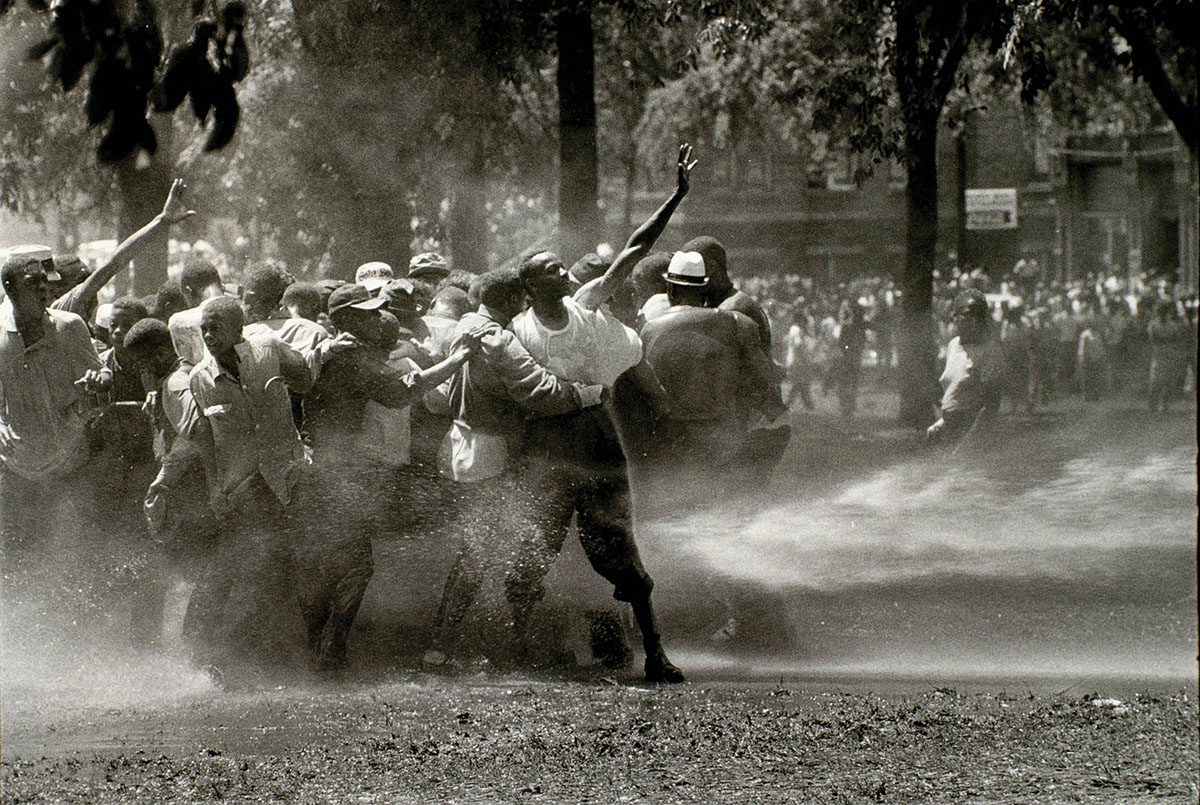
Bob Adelman (1930–2016), Kelly Ingram Park, Birmingham, Alabama, 1963. Gelatin silver print (High Museum of Art, Atlanta, purchased with funds from Dr. Henrie M. Treadwell © Estate of the artist)
I am afraid of a world where people read only T-shirts, and believe only in slogans, and mistake out-arguing one another for actual dialogue. I am afraid, and I am confused about what happened. What happened to history? Actual history? Why are people afraid of history? History, like life, is inherently unmanageable, changeable; both rage and flow eternally, like the sea. The more we know, the more we understand. Nothing can be learned by turning away from the complex, unmanageable truth.
To be afraid of history is to be afraid of life. I am terrified for people who believe only in the present, and can only see what is right in front of them, and whose vision is constantly distorted.
At the talk, the Black woman read from an email that a white woman had written to her, calling her a racist. “Delete,” I leaned over and whispered to my husband in a computer voice. He ignored me. The rest of the audience sighed in sadness and horror. I made an internal note to self: we are now at a point in time when we are destroyed by empty, angry words leveled by people we do not know, much less love. Got it. At that moment, I felt as if I were in a scene in a horror movie, or Invisible Man. This happens to me a lot these days. A lot of times I feel like I didn’t get the memo. What are these times we are living in, when people are felled by unkind utterances from a stranger who might not even exist? I am terrified to be alive in a culture in which my kinsmen and I are so easily manipulated; I am terrified to live in a society in which words are now considered fatal weapons. Them’s fightin’ words. Yes, I grew up in the American South, a world in which social codes were animated by sayings and beliefs about the inflammatory power of speech. But we meant fighting with our fists, not with military-grade weapons. When Zora described tongues in her community as “cocked and loaded,” she meant they could lay you out, not annihilate you.
This world. It’s one world. Let us not forget that we inhabit it together, that time moves in cycles, and that the people in these photographs lived and had stories that they carried in their bodies as well as their mouths. And their stories continue to live in us.
The exhibition A Long Arc: Photography and the American South since 1845 will be on display at the High Museum in Atlanta through January 14, 2024

